If you’ve ever wanted to know how to join crochet hexagons, granny squares or other crochet pieces together with a non-bulky, invisible seam, this is the tutorial for you!
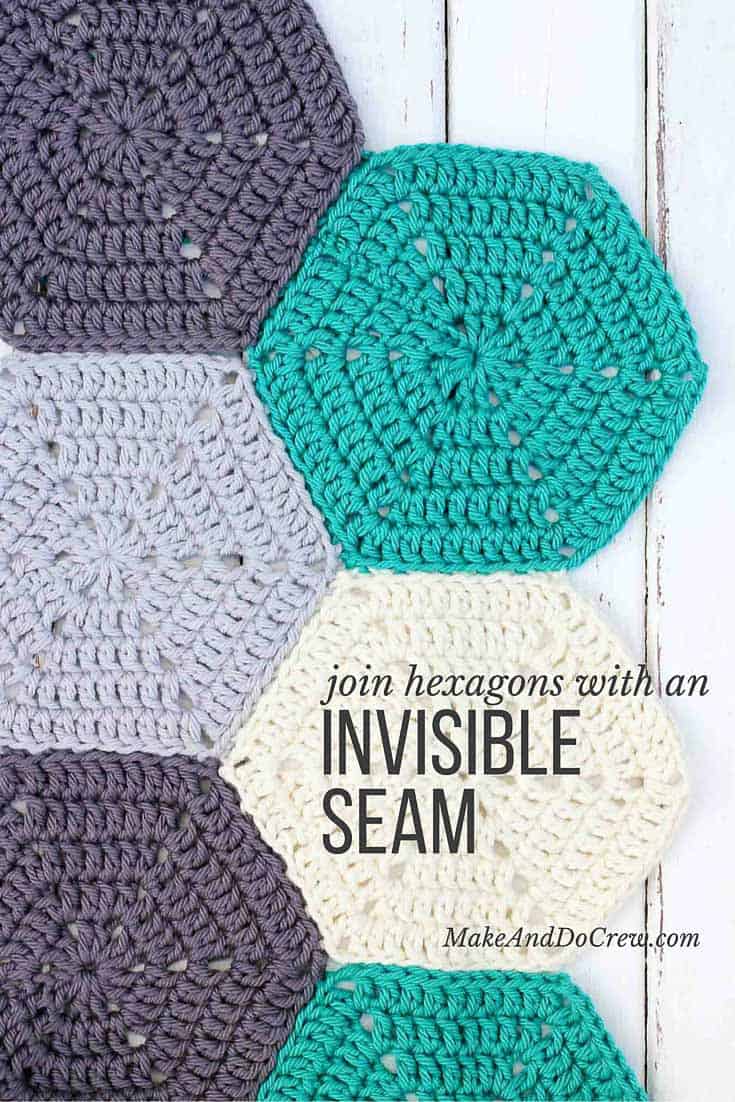
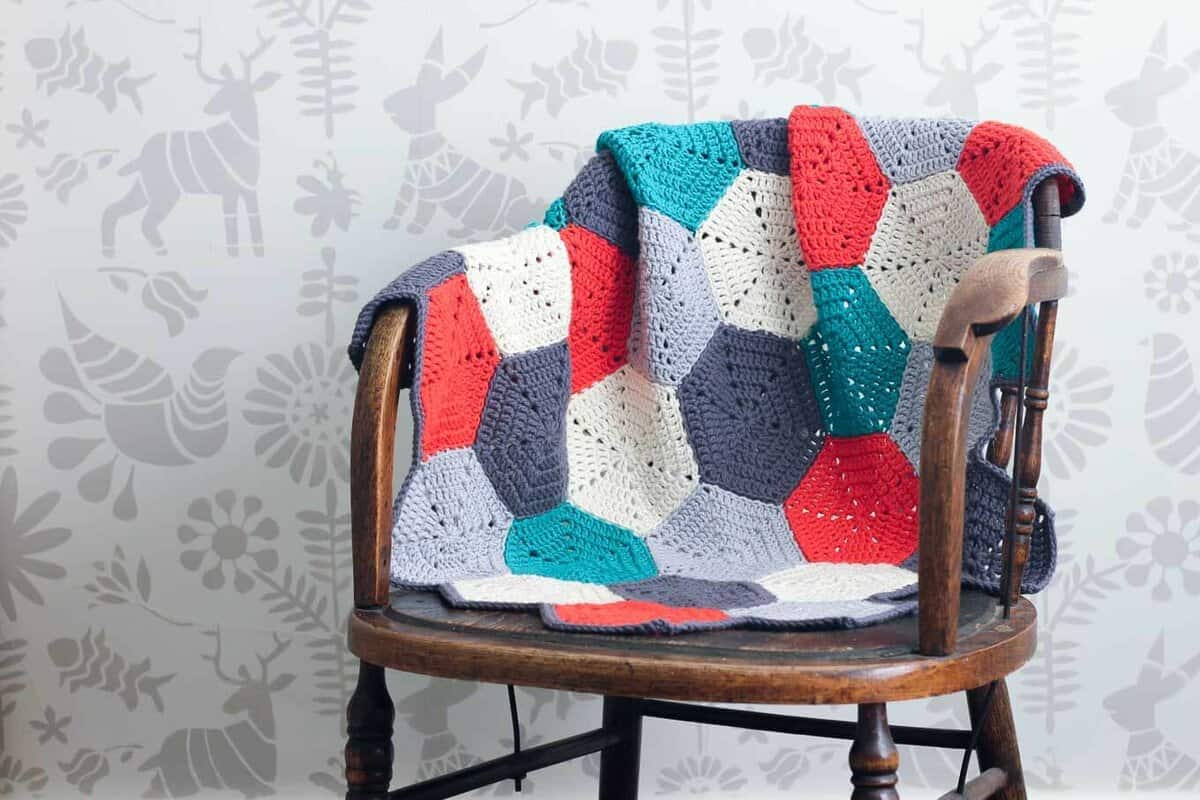
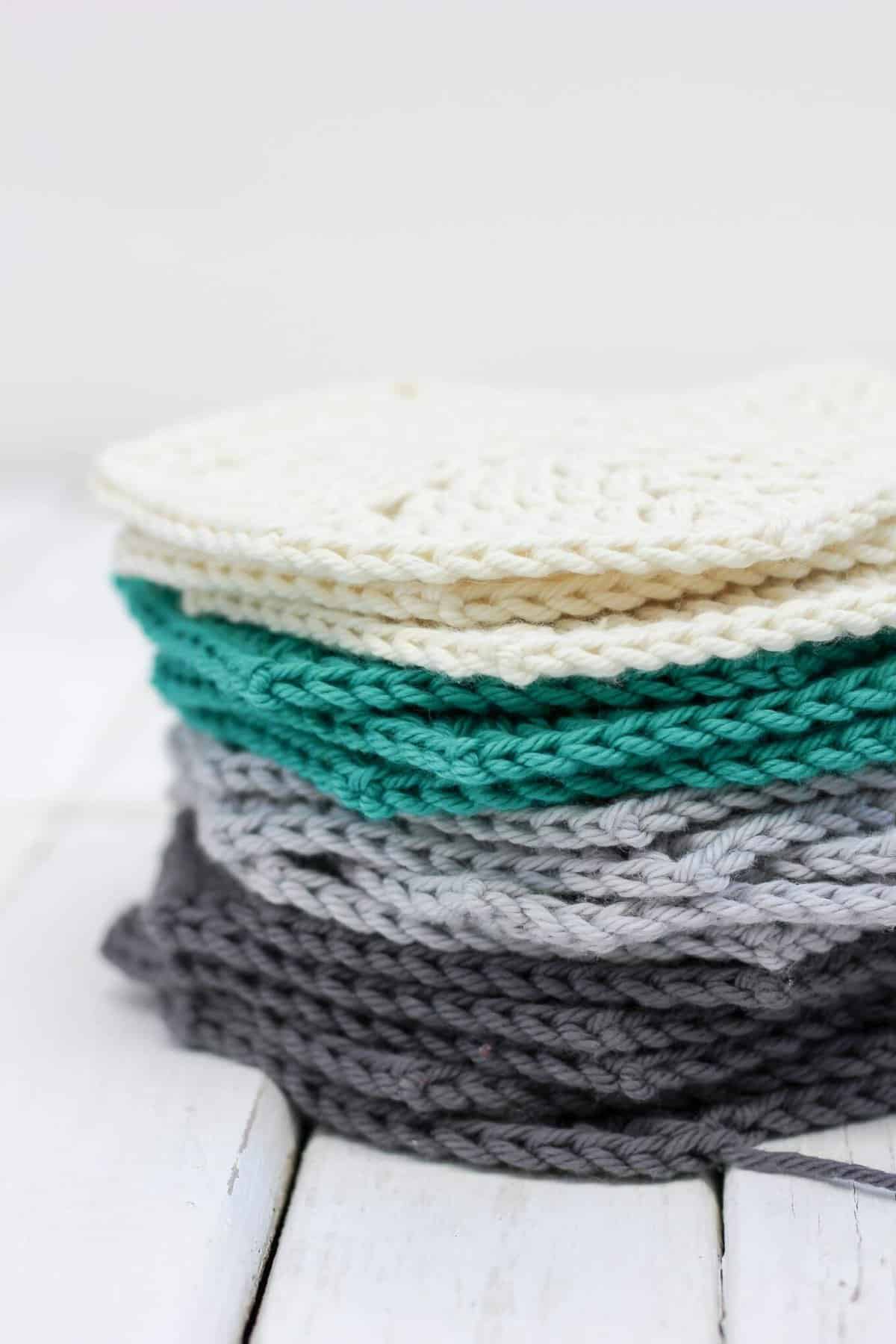
On her podcast, Craftish, Vicki Howell recently called crochet an oral tradition. Now THAT is a definition made so much sense to me. There’s not a right way to crochet. There’s not a wrong way. There’s just yarn and hooks and creativity. So if you, like me, have ever felt burdened by the idea that you need to learn the “science” of crocheting so you could get some phantom A+ in crochet school, I hereby give you permission to let that idea go.
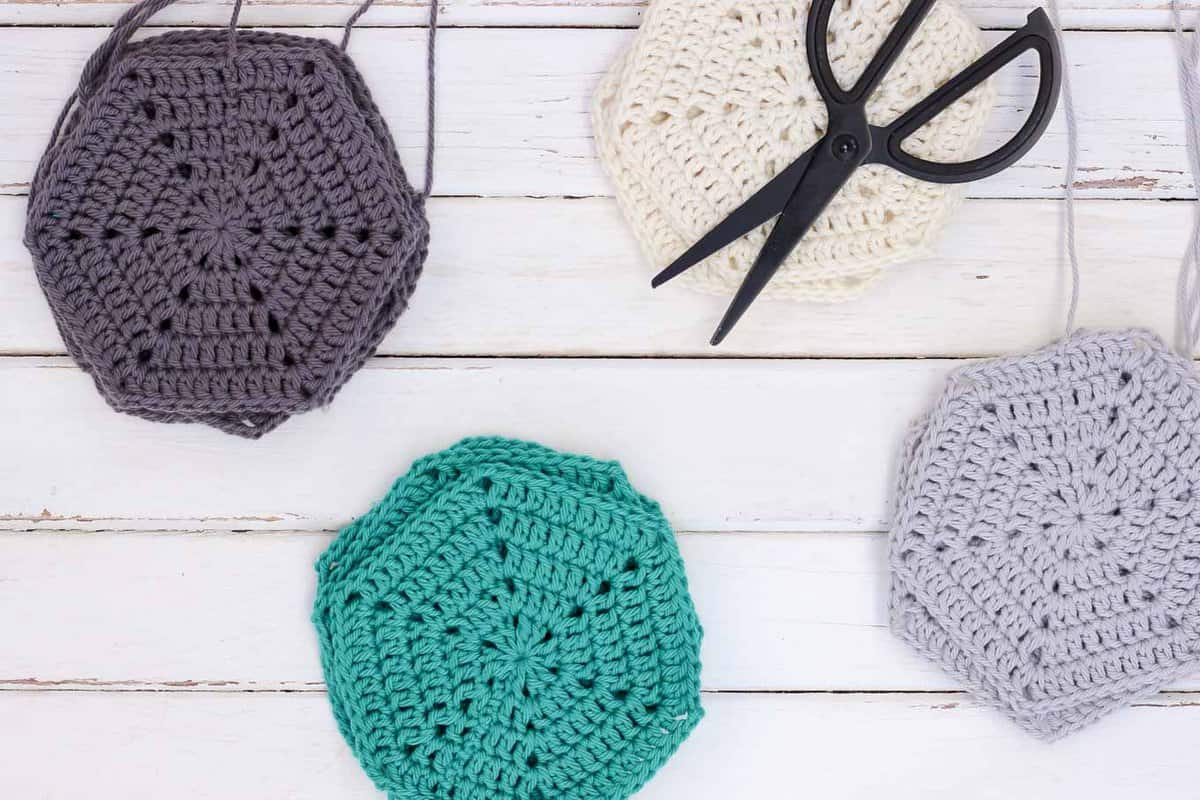
How to Join Crochet Hexagons (or Granny Squares, ETC)
SUPPLIES
• tapestry needle
• yarn in the colors of your hexagons
• scissors
TIPS
First, I highly recommend that you block your crochet pieces before sewing them together. Check out how to make a super inexpensive DIY blocking board and come back when all your hexies are blocked to the same size.
Wanna save this pattern?
You want to keep your pieces lined up so that the stitches are always being sewn one for one. If your stitches get out of alignment, you will end up with weird puckers or uneven angles at the junctures.
To make the seam the least noticeable it can be, use yarn that matches one of the hexagons that is being seamed.
I find it easiest to line the pieces up and keep the seam horizontal in front of me while I’m sewing (as pictured below). This allows me to use my dominant right hand to go back and forth from top to bottom of the seam without switching the needle to the other hand.
Okay, let’s do this!
1. Line two hexagons up together, right sides facing down. You will do all your seaming on the back sides of your crochet pieces. The two sides should both have the same number of stitches, so all the stitches on one piece should more or less be lining up with a buddy on the other piece.
2. Insert your tapestry needle through the back loop of the the chain corner stitch of the bottom hexagon and then proceed through the back loop of the chain corner stitch of the top hexagon. Pull the yarn through, maintaining snug tension, but not pulling it so tight that it puckers.
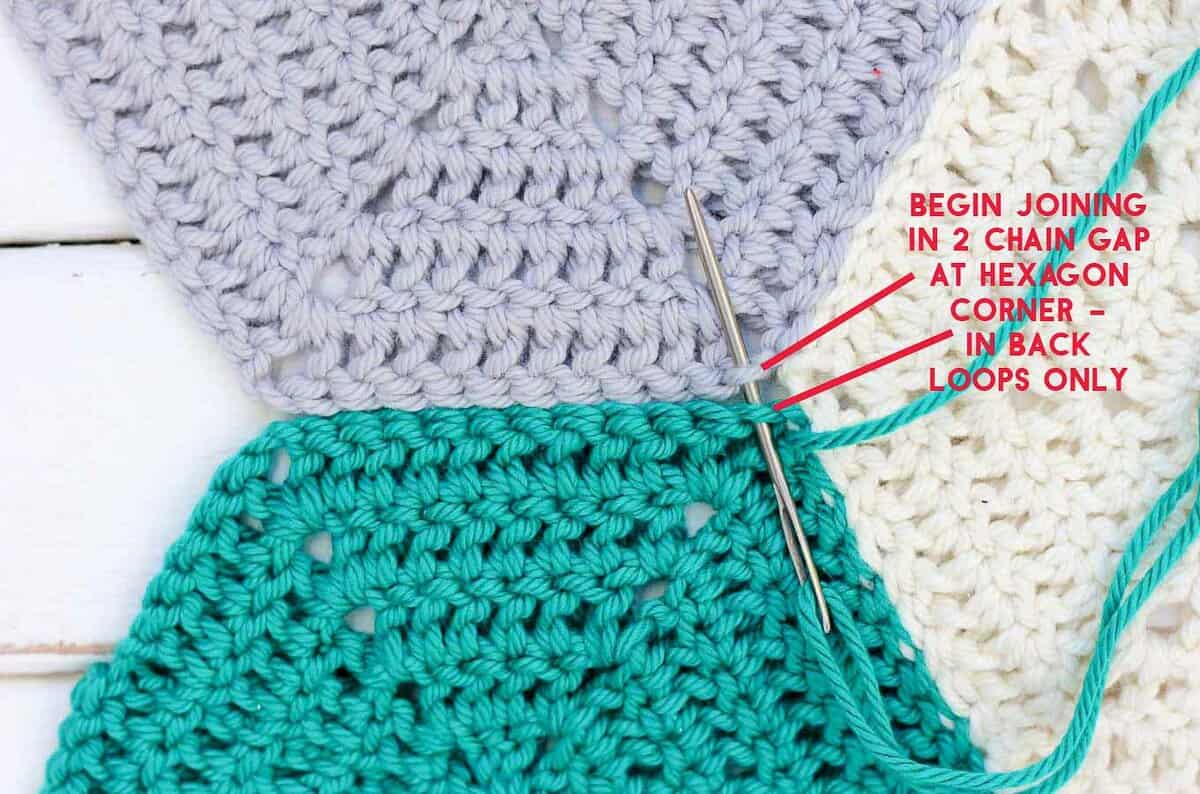
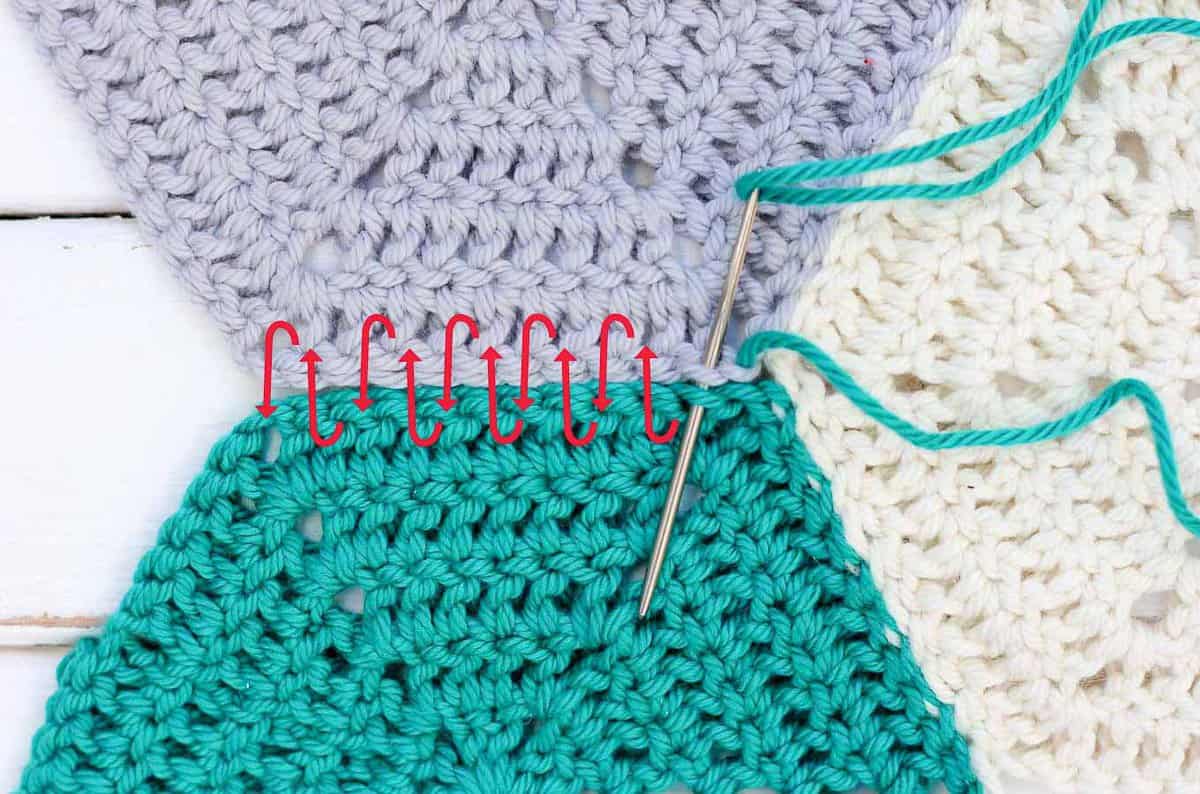
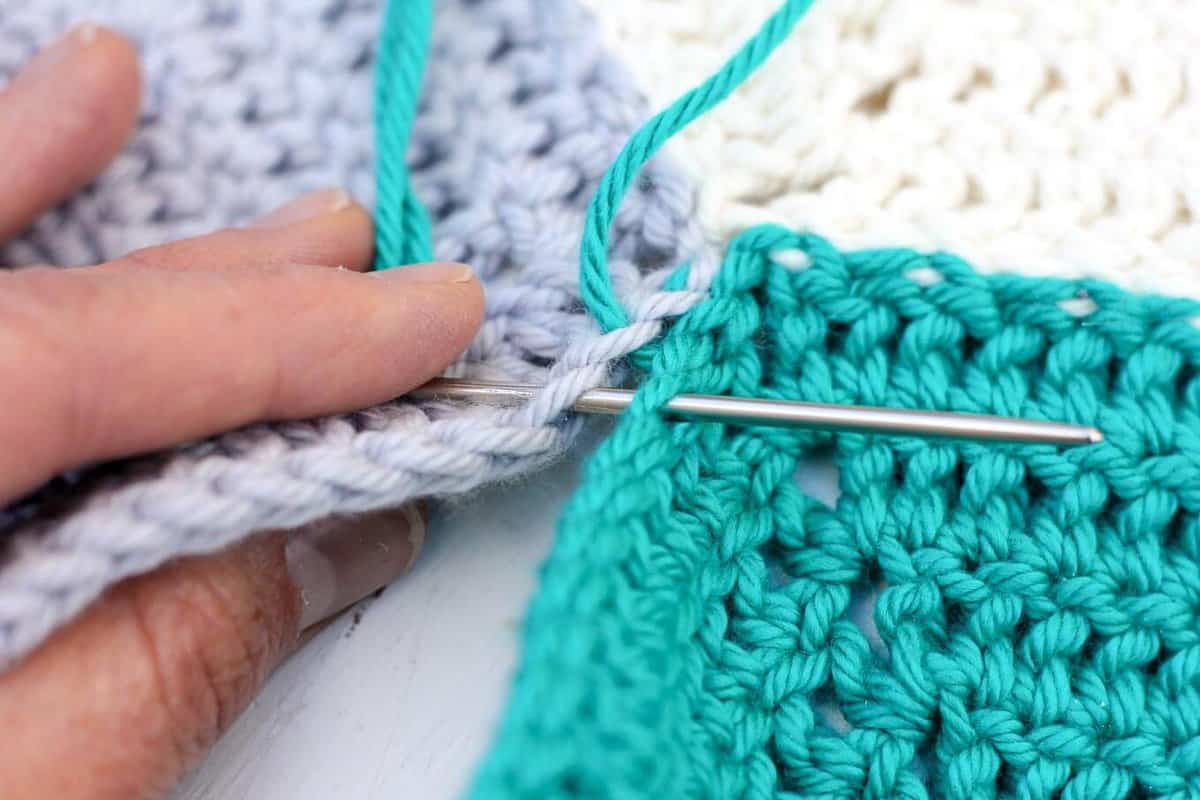
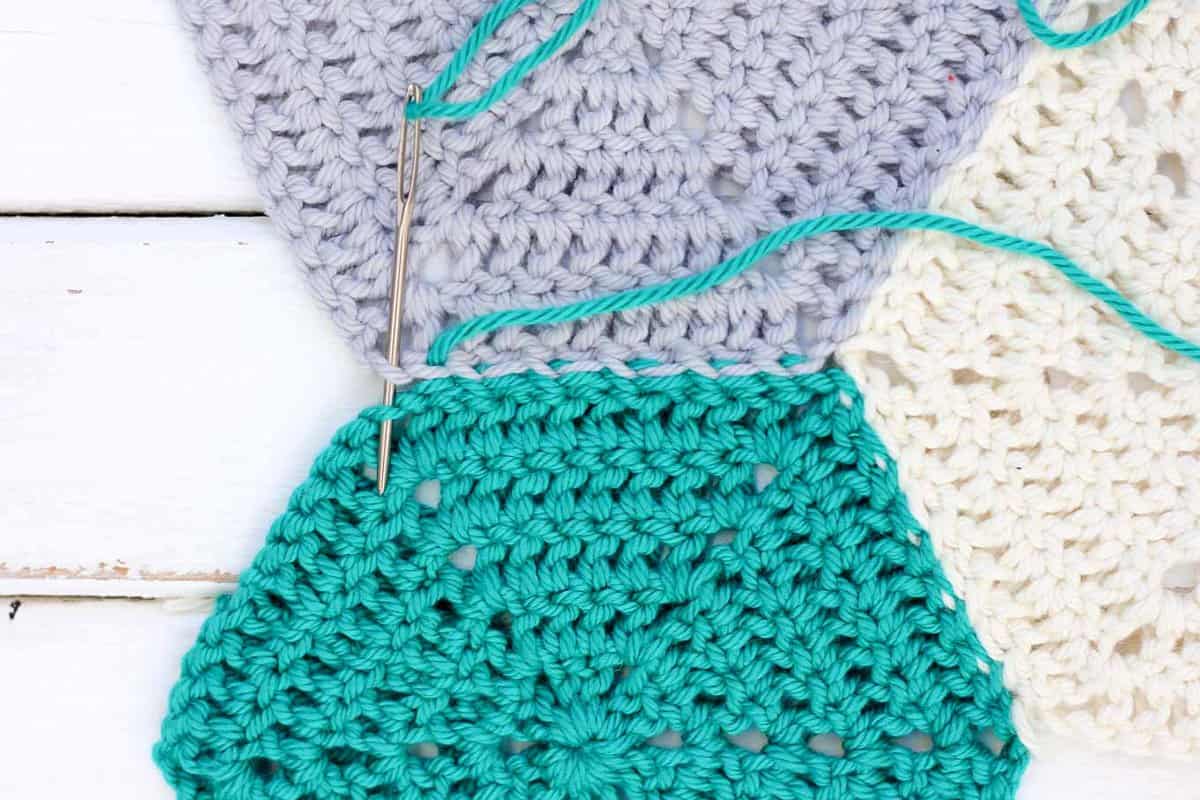
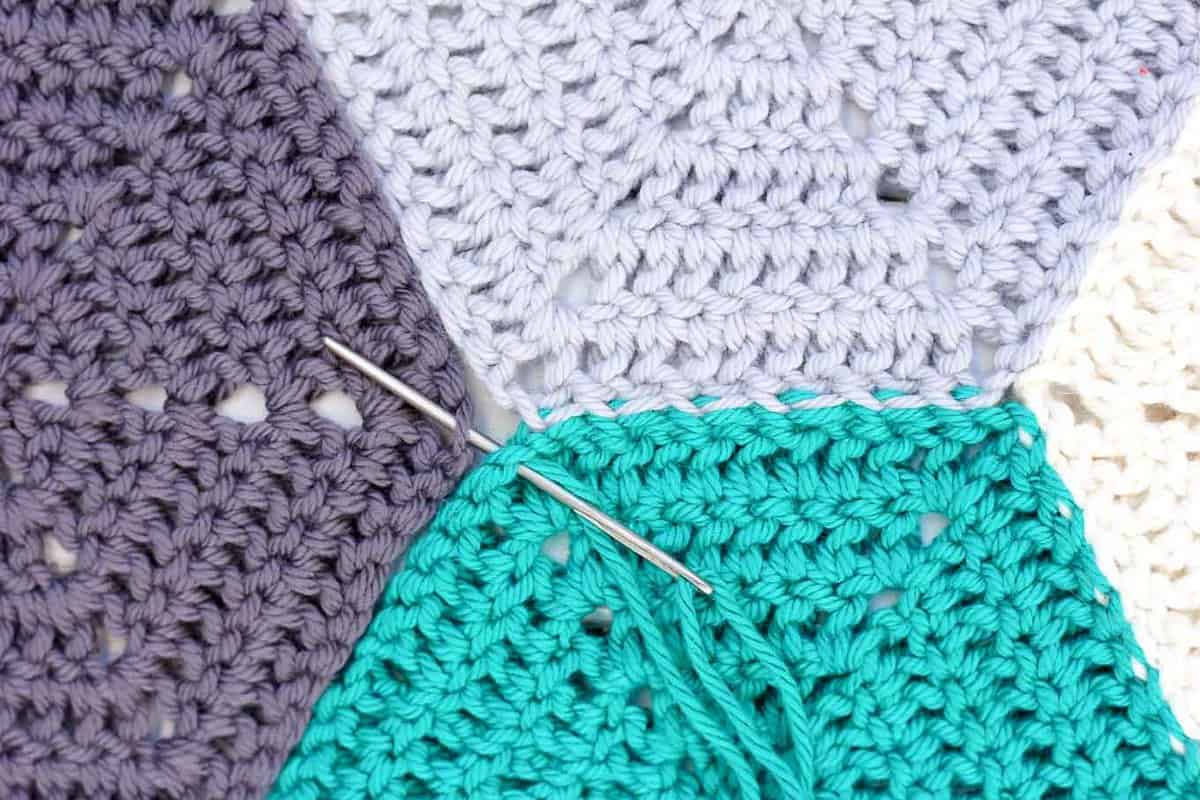
In the meantime, perhaps you’d like to whip up your own DIY blocking board: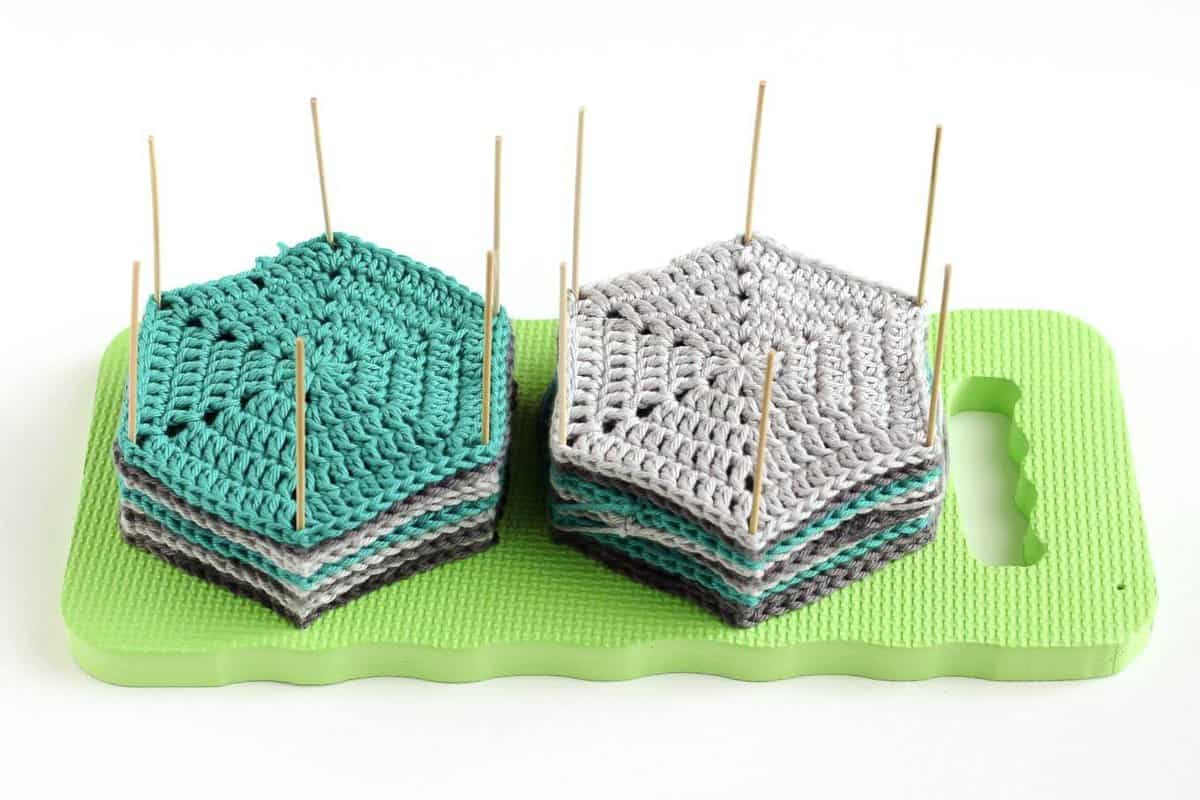

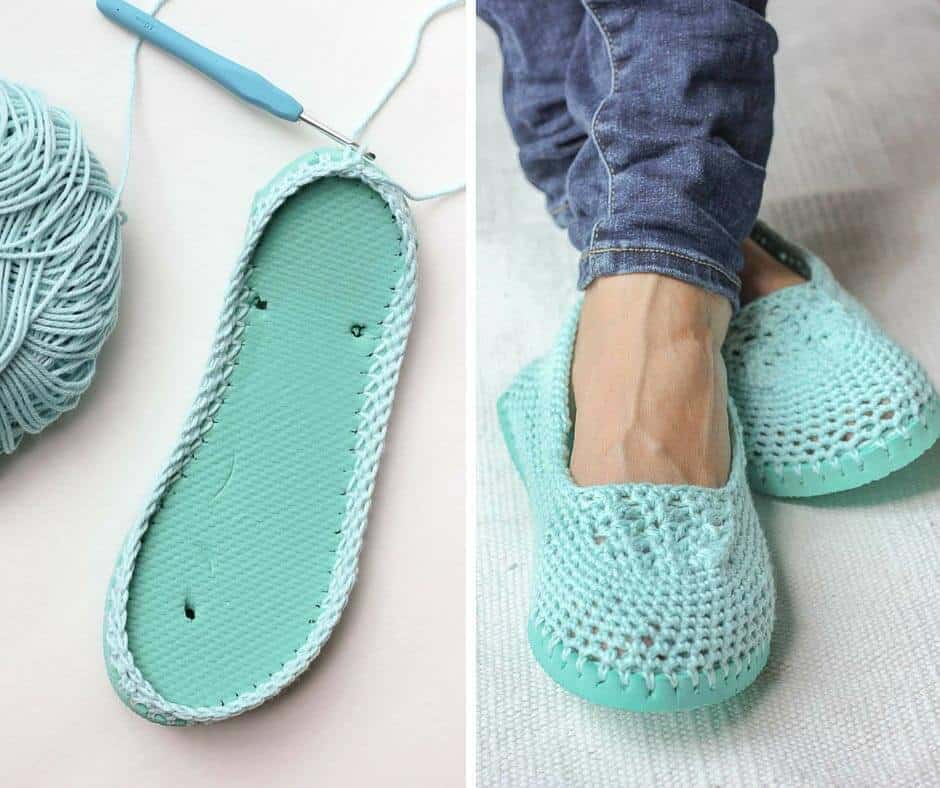
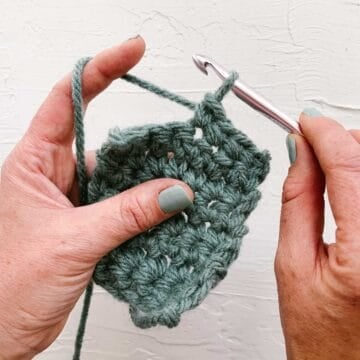
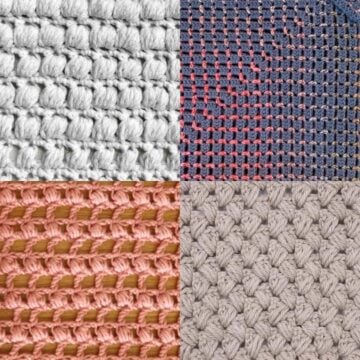
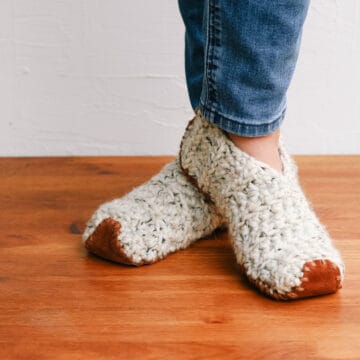
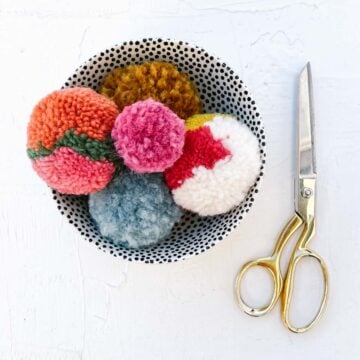
Hayley Kirkby says
I love this tutorial! Thank you so much for sharing it. I have been slowly building a stash of hexagons for the last few months and am at a stage to start joining them now. I have used chunky wool for my hexagons and am thinking about using dk wool to join because I have run out of chunky. Can you think of any disadvantage of using dk to join chunky hexagons?
Jess @ Make and Do Crew says
It’s so fun to have a big stash and finally get to join them! I think that as long as the DK weight yarn is a really sturdy one, you should be just fine It will likely help the seam be more invisible actually. The biggest key is just making sure the seams are strong enough to stand the test of time. 🙂
Happy crocheting, Hayley!
Jess
Sarah says
Hi there, love this hexagon pattern/these instructions. Thankyou!! I’m new to crotchet and am making any blankets for my twins who are due in two months. I’ve just finished one, but want to find a way of doing something around the edges that will make the blanket more of a traditional rectangular shape. Any suggestions of what I could do with sides to make the sides straight?